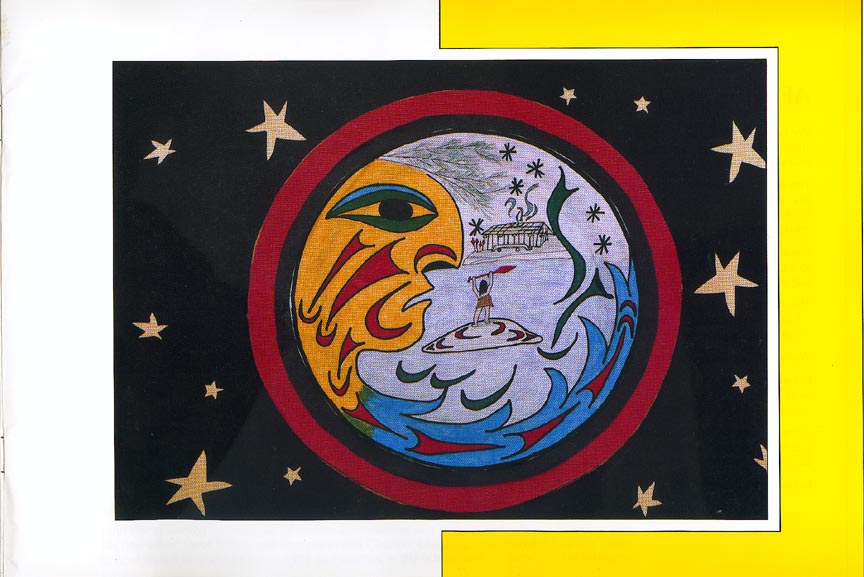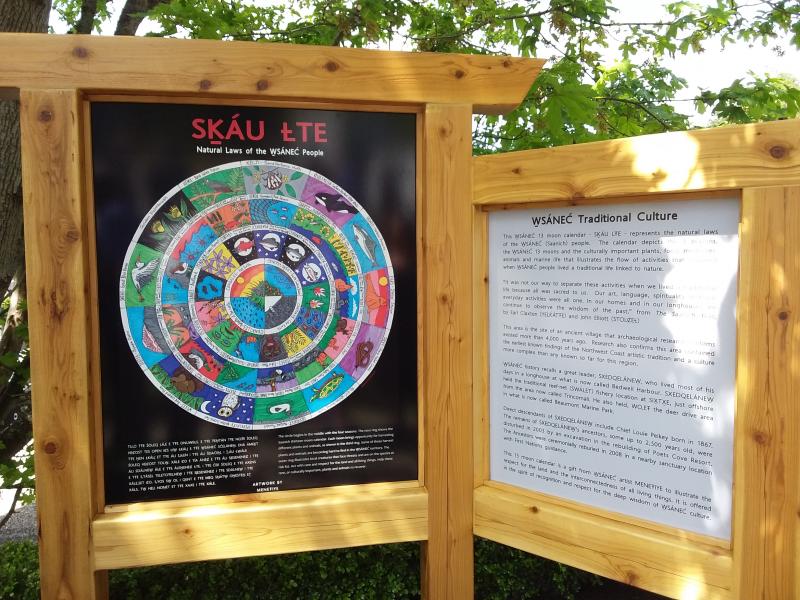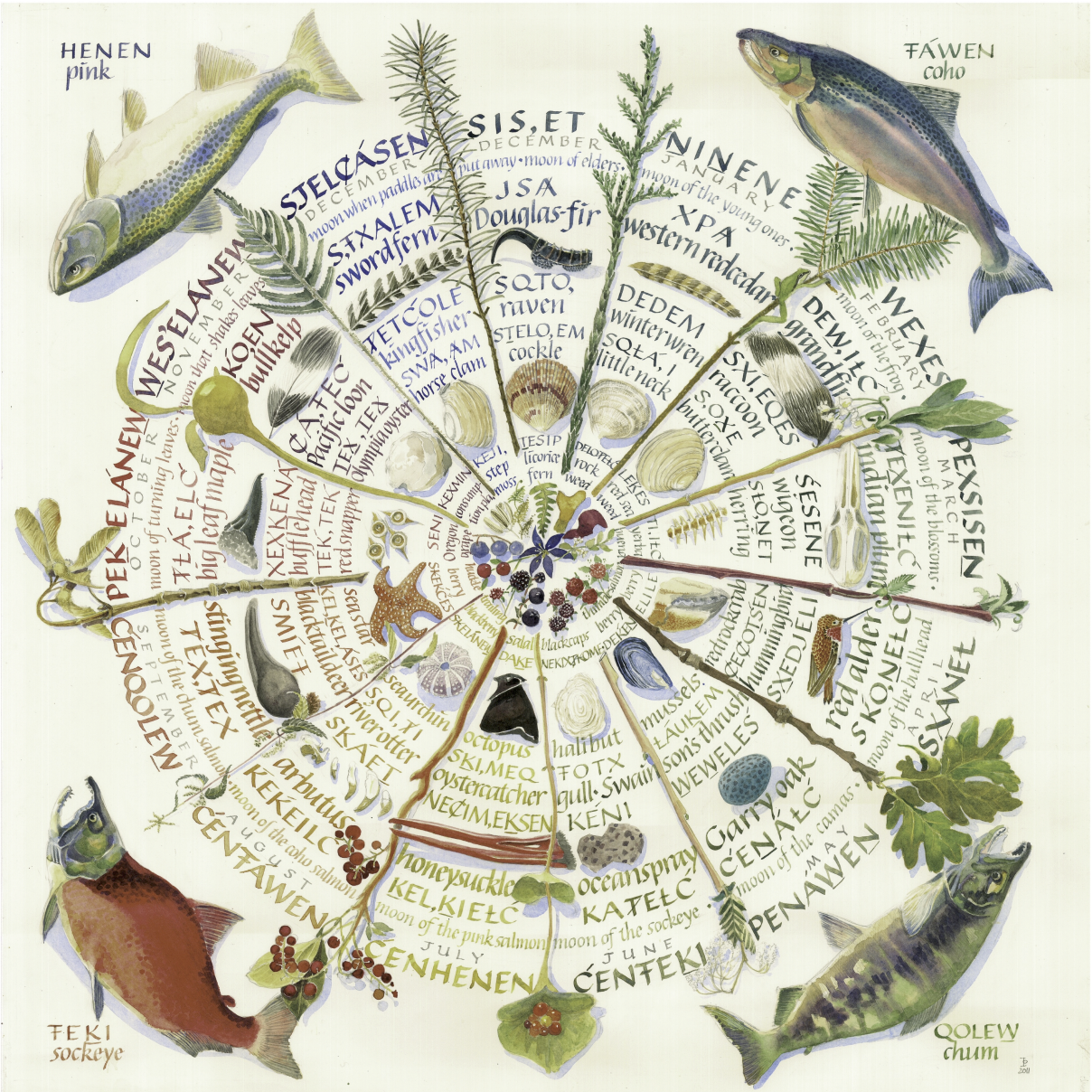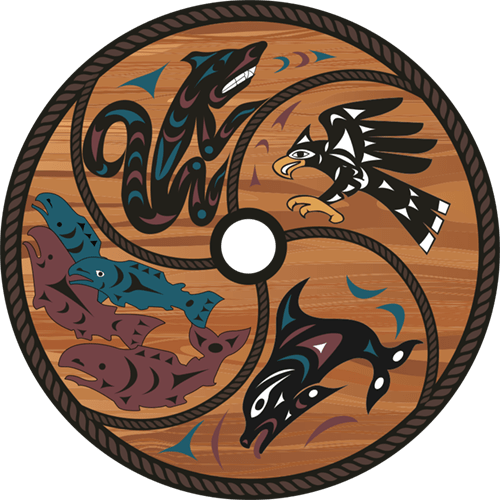This time of year, around what is now called November and December , is traditionally known as SJELCASEN- The Moon of putting your paddle away in the bush.
This moon is the season of strong winds. The weather is unpredictable, making it unsafe to travel. It is time to put the big sea canoes and paddles away. It is time to honour the paddle for carrying one safely all season long. Snow is possible at this time of year. The long house activities start.
WEATHER
Strong and sudden winds are now common on the open sea and it has become unsafe to travel. Squalls and heavy rains can appear suddenly and without warning. South-easterlies are SKANET and south-westerlies are SCES.
ECONOMIC ACTIVITIES
Food gathering takes less time. The winter night tides were low enough for clam digging. Winter clothing was needed. There was now more time to weave mats and capes and to knit wool into clothing. Some items that were stored for Winter included:
- Materials for making twine, rope, lines, cables, baskets and storage boxes
- Cedar inner bark (SLEWI), cooking utensils, and cooking baskets
- Weaving materials for making baby cradles etc.
- Tools and fishing gear either made new or repaired.
Red cedar logs felled earlier in the year were now split into planks which were used as portable roofing and building material (S,ILETEW).
Natural splitting of logs was accomplished by inserting round stones as wedges into the cracks of the drying logs. The Winter winds hastened the drying and splitting process.
CULTURAL ACTIVITIES
It was a time for storytelling and Winter ceremonies. People settled down for Winter and enjoyed the food they had gathered and stored earlier.
THINGS TO THINK ABOUT
- Why do we need to ‘rest’ or putting the paddle away?
- Nature ‘renews’ itself through hibernation. Trees lower their production of sap in the winter. What are other ways that nature rests?
- How is the importance of the cedar tree in the Saanich Peoples’ culture similar or difference to the importance of plants in other cultures? (For example, think about corn!).
- Why is it so important to learn about our roots and heritage? Reflect on your own heritage. What has been passed down to you in terms of language, ideas, wisdom, artefacts etc. what is precious in your family? How does this relate to the stories and traditions of the longhouse?
This illustration of the W̱SÁNEĆ calendar, SḴÁU ȽTE, by artist MENEŦIYE is located on S,DÁYES (South Pender Island). The illustration depicts the four seasons, the 13 moons and the culturally important plants, food, medicines, animals and marine life.
Based on the sacred interconnectedness of all things, the observation of the 13 moons is part of W̱SÁNEĆ natural law. Each of the 13 moons provides guidance as to what cultural and economic activities are best suited for the time of year, as well as what weather to expect and what food is most abundant.
Artist Briony Penn, copyright Tsawout First Nation.
“It was not our way to separate these activities when we lived a traditional life because all was sacred to us. Our art, language, spirituality and our everyday activities were all one. In our homes and in our longhouses we continue to observe the wisdom of the past.”
~The Saanich Year, by Earl Claxton (YELḰÁTŦE) and John Elliott (STOLȻEȽ).
The 13 moons don’t line up exactly with the Gregorian 12-month calendar, but loose associations between months and the moons can be made, as shown above.
RECENT POSTS
How are we doing?
This time of year, around what is now called November and December , is traditionally known as SJELCASEN- The Moon of putting your paddle away in the bush.










